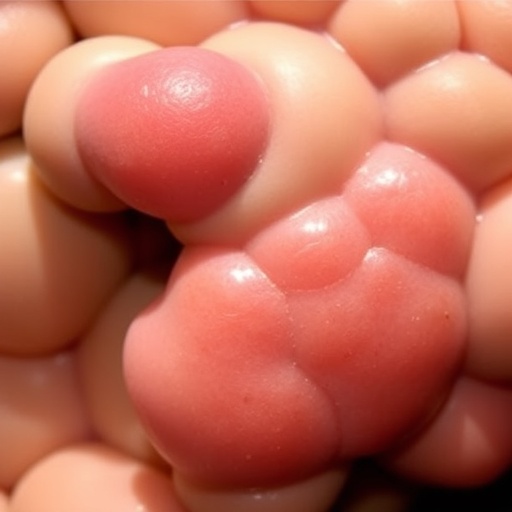Therapists should routinely monitor depression symptoms during psychotherapy and intervene early for insufficient responders
Washington, DC, January 8, 2019
Adolescents with depression who were treated with interpersonal psychotherapy (IPT-A) had significantly better outcomes when their therapists regularly assessed depression symptoms and augmented treatment for insufficient responders after four weeks of therapy rather than waiting until Week 8, reports a study published in the January 2019 issue of the Journal of the American Academy of Child and Adolescent Psychiatry (JAACAP).
The authors also found that after four weeks of IPT-A, augmenting treatment for insufficient responders by increasing the frequency of therapy sessions to twice per week for a period of four weeks, or adding the antidepressant medication, fluoxetine, resulted in similar outcomes.
“Depression affects approximately 11 percent of adolescents, and this represents a significant increase in prevalence over the past decade,” said lead author Meredith Gunlicks-Stoessel, PhD, Assistant Professor at the Department of Psychiatry & Behavioral Sciences and the Institute for Translational Research in Children’s Mental Health at the University of Minnesota, Minneapolis, MN, US. “This is particularly concerning given that psychotherapy for youth depression has the poorest outcomes of all the childhood psychiatric disorders. However, if therapists routinely assess depression symptoms over the course of treatment and intervene early, when indicated, to augment treatment, this may improve outcomes.”
The findings are based on a 16-week sequential multiple assignment randomized trial (SMART). In SMARTs, subjects can be randomized multiple times, and these randomizations occur sequentially at selected critical decision points.
Forty adolescents (age 12-17) who were diagnosed with a depressive disorder began treatment with an initial treatment plan of 12 IPT-A sessions. Adolescents were randomized to reassess their treatment response at either Week 4 or Week 8. Adolescents who were classified as insufficient responders, based on criteria developed from data from a previous trial of IPT-A (
The researchers found that the earlier time point for assessing and identifying potentially insufficient responders (Week 4), was more successful in reducing adolescents’ depression symptoms than the later time point (Week 8), based upon the Children’s Depression Rating Scale-Revised [CDRS-R] (34.94 ± 2.05 versus 40.65 ± 2.05).
Dr. Gunlicks-Stoessel and her co-authors also found that among insufficient responders identified at Week 4, increasing the frequency of therapy sessions to twice per week for a period of four weeks resulted in similar outcomes compared to adding fluoxetine (CDRS-R 33.33 ±2.09 versus 36.11±1.97).
The results of this study provide a concrete guideline that therapists can follow to deliver personalized care that is adapted over time to meet their needs of each individual patient. Dr. Gunlicks-Stoessel and her team are currently conducting a larger scale trial of these treatment algorithms in a community mental health care setting with the goal of increasing the applicability of results to general clinical practice.
###
Notes for editors
The article is “Critical Decision Points for Augmenting Interpersonal Psychotherapy for Depressed Adolescents: A Pilot Sequential Multiple Assignment Randomized Trial,” by Meredith Gunlicks-Stoessel, PhD, Laura Mufson, PhD, Gail Bernstein, MD, Ana Westervelt, MPH, Kristina Reigstad, PsyD, Bonnie Klimes-Dougan, PhD, Kathryn Cullen, MD, Aimee Murray, PsyD, David Vock, PhD (https:/
Dr. Gunlicks-Stoessel is a clinical psychologist and an Assistant Professor in the Department of Psychiatry & Behavioral Sciences and the Institute for Translational Research in Children’s Mental Health at the University of Minnesota. Her research focuses on the development and evaluation of interventions for depression in adolescents. She has a particular interest in the development of adaptive interventions, which provide clinical guidelines for selecting, combining, and sequencing interventions to personalize the intervention approach.
Copies of this paper are available to credentialed journalists upon request; please contact Mary Billingsley at [email protected] or +1 202 587 9672. Journalists wishing to interview the authors may contact Meredith Gunlicks-Stoessel, PhD, University of Minnesota Department of Psychiatry and Behavioral Sciences, 2450 Riverside Ave, Minneapolis, MN 55454 at [email protected].
About JAACAP
Journal of the American Academy of Child and Adolescent Psychiatry (JAACAP) is the official publication of the American Academy of Child and Adolescent Psychiatry. JAACAP is the leading journal focusing exclusively on today’s psychiatric research and treatment of the child and adolescent. Published twelve times per year, each issue is committed to its mission of advancing the science of pediatric mental health and promoting the care of youth and their families.
The Journal’s purpose is to advance research, clinical practice, and theory in child and adolescent psychiatry. It is interested in manuscripts from diverse viewpoints, including genetic, epidemiological, neurobiological, cognitive, behavioral, psychodynamic, social, cultural, and economic. Studies of diagnostic reliability and validity, psychotherapeutic and psychopharmacological treatment efficacy, and mental health services effectiveness are encouraged. The Journal also seeks to promote the well-being of children and families by publishing scholarly papers on such subjects as health policy, legislation, advocacy, culture and society, and service provision as they pertain to the mental health of children and families. http://www.
About Elsevier
Elsevier is a global information analytics business that helps institutions and professionals advance healthcare, open science and improve performance for the benefit of humanity. Elsevier provides digital solutions and tools in the areas of strategic research management, R&D performance, clinical decision support and professional education, including ScienceDirect, Scopus, SciVal, ClinicalKey and Sherpath. Elsevier publishes over 2,500 digitized journals, including The Lancet and Cell, more than 38,000 e-book titles and many iconic reference works, including Gray’s Anatomy. Elsevier is part of RELX Group, a global provider of information and analytics for professionals and business customers across industries. http://www.
Media contact
Mary Billingsley
JAACAP Editorial Office
+1 202 587 9672
[email protected]
Media Contact
Mary Billingsley
[email protected]
202-587-9672
http://dx.




